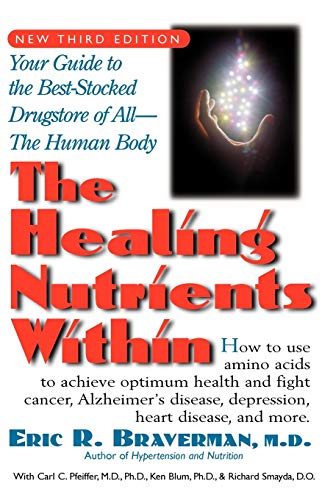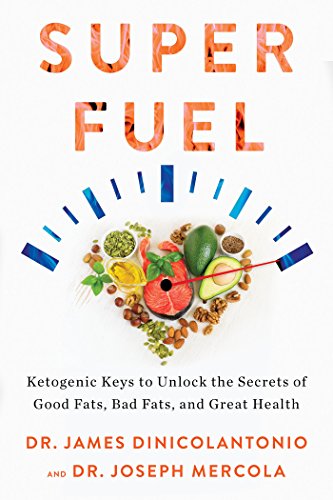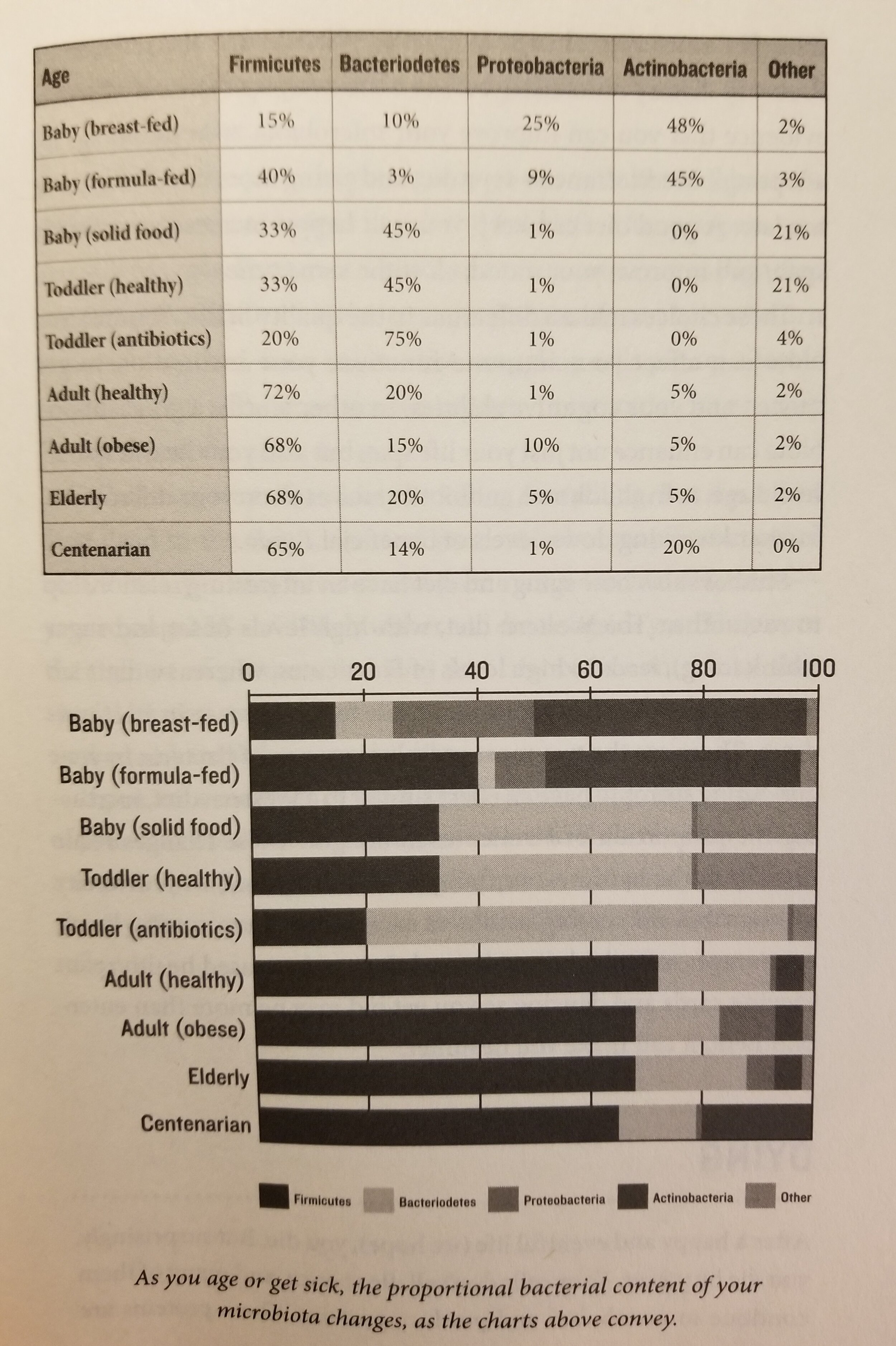References:
3. Premysl Bercik, Elena F. Verdu, Jane A. Foster, Joseph Macri, Murray Potter, Xiaxing Huang, Paul Malinowski, et al., “Chronic Gastrointestinal Inflammation Induces Anxiety-Like Behavior and Alters Central Nervous System Biochemistry in Mice,” Gastroenterology 139, no. 6 (December 2010): 2102–12.e1, doi:10.1053/j.gastro.2010.06.063
4. H. M. Savignac, M. Tramullas, B. Kiely, T. G. Dinan, and J. F. Cryan., “Bifidobacteria Modulate Cognitive Processes in an Anxious Mouse Strain,” Behavioural Brain Research 287 (2015): 59–72, doi:10.1016/j.bbr.2015.02.044.
5. Michaël Messaoudi, Robert Lalonde, Nicolas Violle, Hervé Javelot, Didier Desor, Amine Nejdi, Jean-François Bisson, et al., “Assessment of Psychotropic-Like Properties of a Probiotic Formulation (Lactobacillus helveticus R0052 and Bifidobacterium longum R0175) in Rats and Human Subjects,” British Journal of Nutrition 105, no. 5 (March 2011): 755–64, doi:10.1017/S0007114510004319.
6. A. P. Allen, W. Hutch, Y. E. Borre, P. J. Kennedy, A. Temko, G. Boylan, E. Murphy, J. F. Cryan, T. G. Dinan, and G. Clarke. “Bifidobacterium longum 1714 as a Translational Psychobiotic: Modulation of Stress, Electrophysiology and Neurocognition in Healthy Volunteers,” Translational Psychiatry 6, no. 11 (November 1, 2016): e939, doi:10.1038/tp.2016.191.
7. “Friedrich Altmann, Paul Kosma, Amy O’Callaghan, Sinead Leahy, Francesca Bottacini, Evelyn Molloy, Stephan Plattner, et al., “Genome Analysis and Characterisation of the Exopolysaccharide Produced by Bifidobacterium longum Subsp. longum 35624TM,” PLOS ONE 11, no. 9 (September 22, 2016): e0162983, doi:10.1371/journal.pone.0162983.
8. H. M. Savignac, B. Kiely, T. G. Dinan, and J. F. Cryan, “Bifidobacteria Exert Strain-Specific Effects on Stress-Related Behavior and Physiology in BALB/c Mice,” Neurogastroenterology and Motility: The Official Journal of the European Gastrointestinal Motility Society 26, no. 11 (November 2014): 1615–27, doi:10.1111/nmo.12427.
9. Yudong Li, Toshiaki Shimizu, Atsuto Hosaka, Noritsugu Kaneko, Yoshikazu Ohtsuka, and Yuichiro Yamashiro, “Effects of Bifidobacterium breve Supplementation on Intestinal Flora of Low Birth Weight Infants,” Pediatrics International: Official Journal of the Japan Pediatric Society 46, no. 5 (October 2004): 509–15, doi:10.1111/j.1442-200x.2004.01953.x.
10. Jian-jun Ren, Zhao Yu, Feng-Ling Yang, Dan Lv, Shi Hung, Jie Zhang, Ping Lin, Shi-Xi Liu, Nan Zhang, and Claus Bachert, “Effects of Bifidobacterium breve Feeding Strategy and Delivery Modes on Experimental Allergic Rhinitis Mice,” PloS One 10, no. 10 (2015): e0140018, doi:10.1371/journal.pone.0140018.
11. R. Fuller, “Probiotics in Human Medicine,” Gut 32, no. 4 (April 1991): 439–42.
12. “H. M. Savignac, B. Kiely, T. G. Dinan, and J. F. Cryan, “Bifidobacteria Exert Strain-Specific Effects on Stress-Related Behavior and Physiology in BALB/c Mice,” Neurogastroenterology and Motility: The Official Journal of the European Gastrointestinal Motility Society 26, no. 11 (November 2014): 1615–27, doi:10.1111/nmo.12427.
13. Yezaz A. Ghouri, David M Richards, Erik F Rahimi, Joseph T Krill, Katherine A Jelinek, and Andrew W DuPont, “Systematic Review of Randomized Controlled Trials of Probiotics, Prebiotics, and Synbiotics in Inflammatory Bowel Disease,” Clinical and Experimental Gastroenterology 7 (December 9, 2014): 473–87, doi:10.2147/CEG.S27530.
14. D. Guyonnet, O. Chassany, P. Ducrotte, C. Picard, M. Mouret, C. H. Mercier, and C. Matuchansky, “Effect of a Fermented Milk Containing Bifidobacterium animalis DN-173 010 on the Health-Related Quality of Life and Symptoms in Irritable Bowel Syndrome in Adults in Primary Care: A Multicentre, Randomized, Double-Blind, Controlled Trial,” Alimentary Pharmacology & Therapeutics 26, no. 3 (August 1, 2007): 475–86, doi:10.1111/j.1365-2036.2007.03362.x.
15. M. Ahmed, J. Prasad, H. Gill, L. Stevenson, and P. Gopal, “Impact of Consumption of Different Levels of Bifidobacterium lactis HN019 on the Intestinal Microflora of Elderly Human Subjects,” Journal of Nutrition, Health & Aging 11, no. 1 (February 2007): 26–31.
16. Ryan Rieder, Paul J. Wisniewski, Brandon L. Alderman, and Sara C. Campbell, “Microbes and Mental Health: A Review,” Brain, Behavior, and Immunity (January 25, 2017), doi:10.1016/j.bbi.2017.01.016.
17. “Ghodarz Akkasheh, Zahra Kashani-Poor, Maryam Tajabadi-Ebrahimi, Parvaneh Jafari, Hossein Akbari, Mohsen Taghizadeh, Mohammad Reza Memarzadeh, Zatollah Asemi, and Ahmad Esmaillzadeh, “Clinical and Metabolic Response to Probiotic Administration in Patients with Major Depressive Disorder: A Randomized, Double-Blind, Placebo-Controlled Trial,” Nutrition 32, no. 3 (March 2016): 315–20, doi:10.1016/j.nut.2015.09.003.
18. Christel Rousseaux, Xavier Thuru, Agathe Gelot, Nicolas Barnich, Christel Neut, Laurent Dubuquoy, Caroline Dubuquoy, et al., “Lactobacillus acidophilus Modulates Intestinal Pain and Induces Opioid and Cannabinoid Receptors,” Nature Medicine 13, no. 1 (January 2007): 35–37, doi:10.1038/nm1521.
19. Raffaella Campana, Sara Federici, Eleonora Ciandrini, and Wally Baffone, “Antagonistic Activity of Lactobacillus acidophilus ATCC 4356 on the Growth and Adhesion/Invasion Characteristics of Human Campylobacter jejuni,” Current Microbiology 64, no. 4 (April 2012): 371–78, doi:10.1007/s00284-012-0080-0.
20. Pedro A. Jose and Dominic Raj, “Gut Microbiota in Hypertension,” Current Opinion in Nephrology and Hypertension 24, no. 5 (September 2015): 403–09, doi:10.1097/MNH.0000000000000149.
21. Jia Luo, Tao Wang, Shan Liang, Xu Hu, Wei Li, and Feng Jin, “Ingestion of Lactobacillus Strain Reduces Anxiety and Improves Cognitive Function in the Hyperammonemia Rat,” Science China Life Sciences 57, no. 3 (March 2014): 327–35, doi:10.1007/s11427-014-4615-4.
22. Christina L. Ohland, Lisa Kish, Haley Bell, Aducio Thiesen, Naomi Hotte, Evelina Pankiv, and Karen L. Madsen. “Effects of Lactobacillus helveticus on Murine Behavior Are Dependent on Diet and Genotype and Correlate With Alterations in the Gut Microbiome,” Psychoneuroendocrinology 38, no. 9 (September 2013): 1738–47, doi:10.1016/j.psyneuen.2013.02.008.
23. Valentina Taverniti and Simone Guglielmetti, “Health-Promoting Properties of Lactobacillus helveticus,” Frontiers in Microbiology 3 (2012): 392, doi:10.3389/fmicb.2012.00392.
24. Javier A. Bravo, Paul Forsythe, Marianne V. Chew, Emily Escaravage, Hélène M. Savignac, Timothy G. Dinan, John Bienenstock, and John F. Cryan, “Ingestion of Lactobacillus Strain Regulates Emotional Behavior and Central GABA Receptor Expression in a Mouse via the Vagus Nerve,” Proceedings of the National Academy of Sciences of the United States of America 108, no. 38 (September 20, 2011): 16050–55, doi:10.1073/pnas.1102999108.
25. Ibid.
26. Natalia Pedersen, Nynne Nyboe Andersen, Zsuzsanna Végh, Lisbeth Jensen, Dorit Vedel Ankersen, Maria Felding, Mette Hestetun Simonsen, Johan Burisch, and Pia Munkholm. “Ehealth: Low FODMAP Diet vs Lactobacillus rhamnosus GG in Irritable Bowel Syndrome,” World Journal of Gastroenterology 20, no. 43 (November 21, 2014): 16215, doi:10.3748/wjg.v20.i43.16215.
27. John R. Kelly, Andrew P. Allen, Andriy Temko, William Hutch, Paul J. Kennedy, Niloufar Farid, Eileen Murphy, et al., “Lost in Translation? The Potential Psychobiotic Lactobacillus rhamnosus (JB-1) Fails to Modulate Stress or Cognitive Performance in Healthy Male Subjects,” Brain, Behavior, and Immunity 61 (March 2017): 50–59, doi:10.1016/j.bbi.2016.11.018.
28. Shelly A. Buffington, Gonzalo Viana Di Prisco, Thomas A. Auchtung, Nadim J. Ajami, Joseph F. Petrosino, and Mauro Costa-Mattioli, “Microbial Reconstitution Reverses Maternal Diet-Induced Social and Synaptic Deficits in Offspring,” Cell 165, no. 7 (June 16, 2016): 1762–75, doi:10.1016/j.cell.2016.06.001.
29. S. E. Erdman and T. Poutahidis, “Probiotic ‘Glow of Health’: It’s More Than Skin Deep,” Beneficial Microbes 5, no. 2 (June 1, 2014): 109–19, doi:10.3920/BM2013.0042; Bernard J. Varian, Theofilos Poutahidis, Brett T. DiBenedictis, Tatiana Levkovich, Yassin Ibrahim, Eliska Didyk, Lana Shikhman, et al., “Microbial Lysate Upregulates Host Oxytocin,” Brain, Behavior, and Immunity 61 (March 2017): 36–49, doi:10.1016/j.bbi.2016.11.002.
30. T. Kamiya, L. Wang, P. Forsythe, G. Goettsche, Y. Mao, Y. Wang, G. Tougas, and J. Bienenstock. “Inhibitory Effects of Lactobacillus reuteri on Visceral Pain Induced by Colorectal Distension in Sprague-Dawley Rats,” Gut 55, no. 2 (February 2006): 191–96, doi:10.1136/gut.2005.070987.
31. Douglas B. DiRienzo, “Effect of Probiotics on Biomarkers of Cardiovascular Disease: Implications for Heart-Healthy Diets,” Nutrition Reviews 72, no. 1 (January 2014): 18–29, doi:10.1111/nure.12084.
32. J. J. Jeong, J. Y. Woo, K. A. Kim, M. J. Han, and D. H. Kim, “Lactobacillus pentosus Var. plantarum C29 Ameliorates Age-Dependent Memory Impairment in Fischer 344 Rats,” Letters in Applied Microbiology 60, no. 4 (April 2015): 307–14, doi:10.1111/lam.12393.
33. Kamini Ramiah, Carol A. van Reenen, and Leon M. T. Dicks, “Surface-Bound Proteins of Lactobacillus plantarum 423 That Contribute to Adhesion of Caco-2 Cells and Their Role in Competitive Exclusion and Displacement of Clostridium sporogenes and Enterococcus faecalis,” Research in Microbiology 159, no. 6 (July 2008): 470–75, doi:10.1016/j.resmic.2008.06.002.
34. K. Niedzielin, H. Kordecki, and B. Birkenfeld, “A Controlled, Double-Blind, Randomized Study on the Efficacy of Lactobacillus plantarum 299V in Patients with Irritable Bowel Syndrome,” European Journal of Gastroenterology & Hepatology 13, no. 10 (October 2001): 1143–47.
35. D. Benton, C. Williams, and A. Brown, “Impact of Consuming a Milk Drink Containing a Probiotic on Mood and Cognition,” European Journal of Clinical Nutrition 61, no. 3 (March 2007): 355–61, doi:10.1038/sj.ejcn.1602546.
36. A. Venket Rao, Alison C. Bested, Tracey M. Beaulne, Martin A. Katzman, Christina Iorio, John M. Berardi, and Alan C. Logan, “A Randomized, Double-Blind, Placebo-Controlled Pilot Study of a Probiotic in Emotional Symptoms of Chronic Fatigue Syndrome,” Gut Pathogens 1, no. 1 (March 19, 2009): 6, doi:10.1186/1757-4749-1-6
37. “Alison C. Bested, Alan C. Logan, and Eva M. Selhub, “Intestinal Microbiota, Probiotics and Mental Health: From Metchnikoff to Modern Advances: Part III—Convergence Toward Clinical Trials,” Gut Pathogens 5 (March 16, 2013): 4, doi:10.1186/1757-4749-5-4.
38. Noriko Komatsuzaki and Jun Shima, “Effects of Live Lactobacillus paracasei on Plasma Lipid Concentration in Rats Fed an Ethanol-Containing Diet,” Bioscience, Biotechnology, and Biochemistry 76, no. 2 (2012): 232–37, doi:10.1271/bbb.110390.
39. L. V. McFarland and P. Bernasconi, “Saccharomyces boulardii. A Review of an Innovative Biotherapeutic Agent,” Microbial Ecology in Health and Disease 6, no. 4 (January 1, 1993): 157–71, doi:10.3109/08910609309141323; Mario Guslandi, Gianni Mezzi, Massimo Sorghi, and Pier Alberto Testoni, “Saccharomyces boulardii in Maintenance Treatment of Crohn’s Disease,” Digestive Diseases and Sciences 45, no. 7 (July 1, 2000): 1462–64, doi:10.1023/A:1005588911207.
.














































